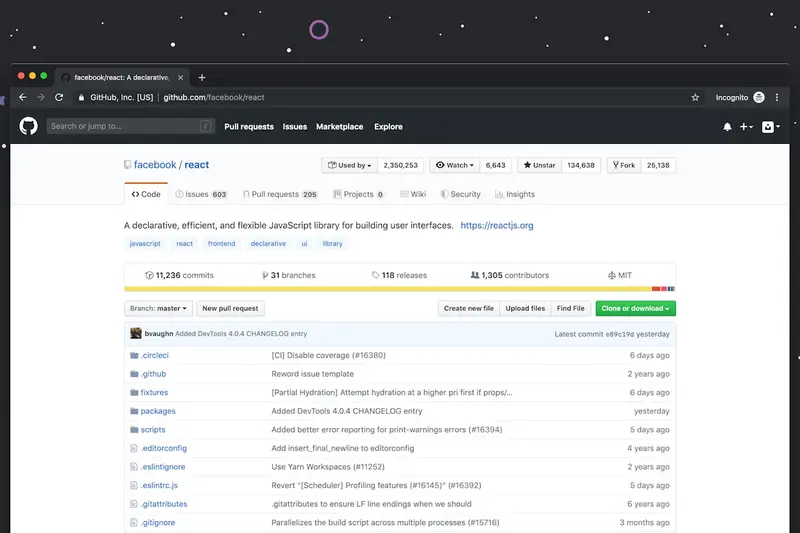⚡ Optimizing Repository Performance: Simple Guide
Let’s make your Alpine Linux repositories work faster! 💻 This tutorial shows you how to optimize repository performance for quicker package downloads and updates. It’s like giving your package manager a speed boost! 😊
🤔 What is Repository Performance Optimization?
Repository performance optimization is like tuning up your car for better speed! 🚗 You adjust settings and choose better servers to make downloading packages much faster.
Repository optimization is like:
- 🏎️ Choosing the fastest highway to your destination
- 📡 Finding the strongest internet signal tower
- 🎯 Using shortcuts to get things done quicker
🎯 What You Need
Before we start, you need:
- ✅ Alpine Linux system running
- ✅ Root access to your system
- ✅ Internet connection for testing
- ✅ Basic knowledge of APK commands
📋 Step 1: Choose Faster Repository Mirrors
Finding the Best Mirror
Let’s start by finding the fastest repository mirrors for your location. It’s easy! 😊
What we’re doing: Testing different repository mirrors to find the fastest ones.
# Backup current repository configuration
cp /etc/apk/repositories /etc/apk/repositories.backup
# Test mirror speed (example with different mirrors)
time apk update --repositories-file /dev/stdin <<EOF
https://dl-cdn.alpinelinux.org/alpine/v3.18/main
https://dl-cdn.alpinelinux.org/alpine/v3.18/community
EOF
# Test another mirror
time apk update --repositories-file /dev/stdin <<EOF
https://mirror.1und1.de/alpine/v3.18/main
https://mirror.1und1.de/alpine/v3.18/community
EOFWhat this does: 📖 Shows you which mirrors download package information fastest.
Example output:
✅ First mirror: 2.3 seconds
✅ Second mirror: 1.8 secondsWhat this means: The second mirror is faster for your location! ✅
💡 Important Tips
Tip: Choose mirrors geographically close to you! 💡
Warning: Always backup your repository configuration first! ⚠️
🛠️ Step 2: Configure Repository Settings
Optimizing APK Configuration
Now let’s configure APK settings for better performance! ⚡
What we’re doing: Adjusting APK settings to download packages more efficiently.
# Create APK configuration directory
mkdir -p /etc/apk
# Create optimized APK configuration
cat > /etc/apk/apk.conf << 'EOF'
# Repository optimization settings
@main https://dl-cdn.alpinelinux.org/alpine/v3.18/main
@community https://dl-cdn.alpinelinux.org/alpine/v3.18/community
@testing https://dl-cdn.alpinelinux.org/alpine/edge/testing
# Performance settings
cache-dir /var/cache/apk
force-refresh
EOF
# Update repositories file with fastest mirrors
cat > /etc/apk/repositories << 'EOF'
@main
@community
@testing
EOFCode explanation:
@main: Creates an alias for the main repositorycache-dir: Sets where downloaded packages are storedforce-refresh: Always gets fresh package information
Expected Output:
✅ APK configuration created
✅ Repository aliases set upWhat this means: Great job! Your package manager is now optimized! 🎉
🎮 Let’s Try It!
Time for hands-on practice! This is the fun part! 🎯
What we’re doing: Testing the optimized configuration and measuring improvement.
# Clear APK cache
rm -rf /var/cache/apk/*
# Test download speed with optimization
time apk update
# Test package installation speed
time apk add --no-cache curl
# Check cache usage
du -sh /var/cache/apk/You should see:
✅ Update completed faster
✅ Package installed quickly
✅ Cache is being used effectivelyAwesome work! 🌟
📊 Quick Summary Table
| What to Do | Command | Result |
|---|---|---|
| 🔧 Test mirrors | time apk update | ✅ Find fastest mirror |
| 🛠️ Set up cache | cache-dir /var/cache/apk | ✅ Faster downloads |
| 🎯 Use aliases | @main | ✅ Easy management |
🎮 Practice Time!
Let’s practice what you learned! Try these simple examples:
Example 1: Enable Parallel Downloads 🟢
What we’re doing: Setting up APK to download multiple packages at once.
# Add parallel download setting
echo "max-concurrent-downloads 4" >> /etc/apk/apk.conf
# Test with multiple packages
time apk add git vim nano
# Check if downloads happened simultaneously
apk info | wc -lWhat this does: Downloads packages faster by using multiple connections! 🌟
Example 2: Set Up Local Repository Cache 🟡
What we’re doing: Creating a local cache to avoid repeated downloads.
# Create persistent cache directory
mkdir -p /var/cache/apk/packages
# Configure persistent cache
echo "cache-max-age 7200" >> /etc/apk/apk.conf
# Enable cache compression
echo "cache-compression gzip" >> /etc/apk/apk.conf
# Test cache effectiveness
apk add --no-cache python3
apk del python3
apk add --no-cache python3 # Should be fasterWhat this does: Reuses downloaded packages to save time and bandwidth! 📚
🚨 Fix Common Problems
Problem 1: Slow repository updates ❌
What happened: APK update takes too long to complete. How to fix it: Choose better mirrors and enable caching!
# Find your continent's mirror
apk update --repositories-file /dev/stdin <<EOF
https://mirror.math.princeton.edu/pub/alpinelinux/v3.18/main
https://mirror.math.princeton.edu/pub/alpinelinux/v3.18/community
EOF
# Update repositories file
echo "https://mirror.math.princeton.edu/pub/alpinelinux/v3.18/main" > /etc/apk/repositories
echo "https://mirror.math.princeton.edu/pub/alpinelinux/v3.18/community" >> /etc/apk/repositoriesProblem 2: Cache taking too much space ❌
What happened: Repository cache is using too much disk space. How to fix it: Clean old cache files and set size limits!
# Clean old cache files
apk cache clean
# Set cache size limit
echo "cache-max-size 500M" >> /etc/apk/apk.conf
# Check current cache size
du -sh /var/cache/apk/Don’t worry! These problems happen to everyone. You’re doing great! 💪
💡 Simple Tips
- Test regularly 📅 - Check mirror speed monthly
- Keep cache clean 🌱 - Clean old files weekly
- Ask for help 🤝 - Everyone needs help sometimes
- Monitor usage 💪 - Watch download speeds and cache size
✅ Check Everything Works
Let’s make sure everything is working:
# Test repository speed
time apk update
# Check cache configuration
cat /etc/apk/apk.conf
# Verify mirror selection
cat /etc/apk/repositoriesGood output:
✅ Update completes quickly
✅ Configuration looks correct
✅ Fast mirrors are selected🏆 What You Learned
Great job! Now you can:
- ✅ Choose and configure fast repository mirrors
- ✅ Set up APK caching for better performance
- ✅ Use parallel downloads for faster installations
- ✅ Monitor and maintain repository performance
🎯 What’s Next?
Now you can try:
- 📚 Learning about creating custom repository mirrors
- 🛠️ Setting up automated mirror testing
- 🤝 Helping others optimize their package management
- 🌟 Building high-performance development environments!
Remember: Every expert was once a beginner. You’re doing amazing! 🎉
Keep practicing and you’ll become an expert too! 💫




